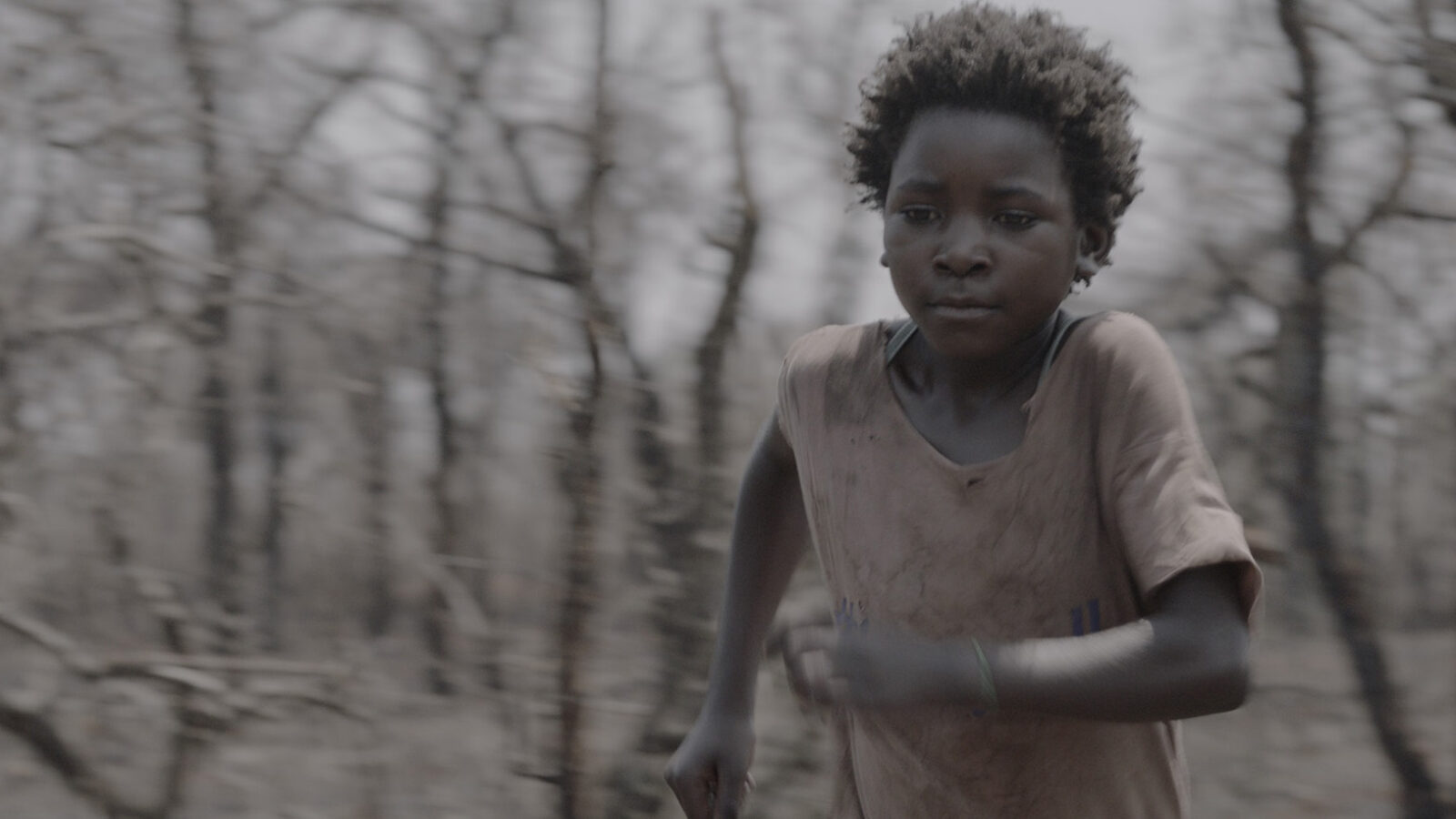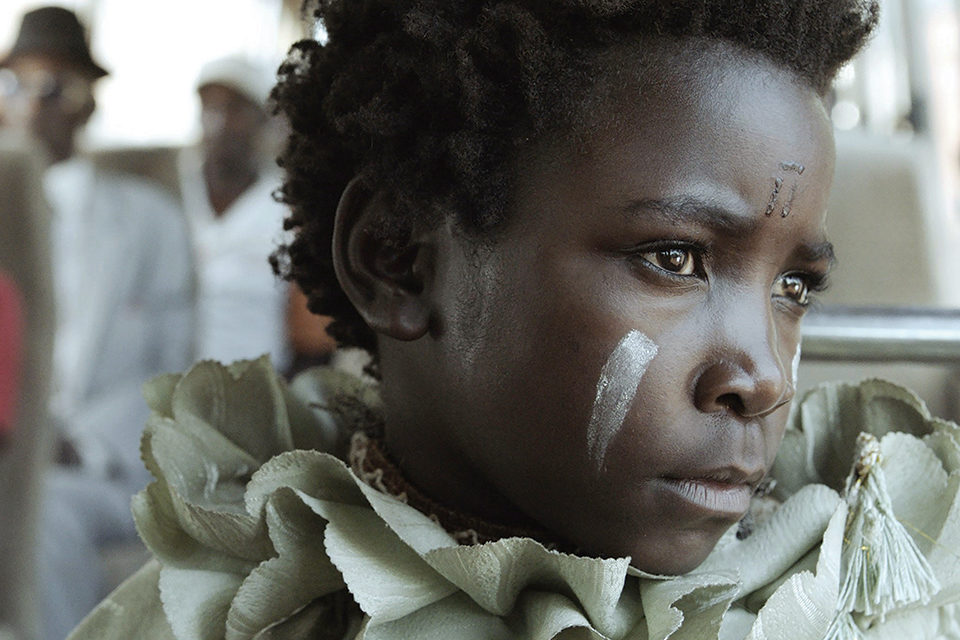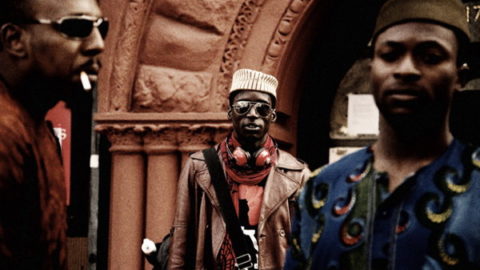By Kelley Dong in the September-October 2018 Issue

Review: I Am Not a Witch
(Rungano Nyoni, UK/France/Germany, Film Movement, Opening September 7)
Through a shoddy metal fence in the Zambian countryside, a group of gaggling tourists—black and white, young and old—peer out at a maypole. Its white ribbons are tied to the bodies of women wrapped in blue sashes, faces painted white. The guide explains that the ribbons “prevent the witches from flying.” For if they fly, then they may also kill. Thankfully for the tourists in this opening scene from I Am Not a Witch, this never happens.

From the September-October 2018 Issue
Also in this issue
Within the gates of the “witch camp”—a settlement and labor camp of accused women—their bodies are bound to the land. Enacted in 1914 by the British colonial government, the Zambian Witchcraft Act states that the practice of witchcraft by those accused as witches is illegal. By ascribing a name to the face and to the act, the state treats witches not as characters of lore, but as legal entities. The title of Rungano Nyoni’s I Am Not a Witch invites a dangerous guessing game, but as the film demonstrates, the thrill of pointing fingers only distracts from the corruption of the law itself.
Nine-year-old orphan Shula (her name means “uprooted”) is one such accused: she startled a woman who spilled her bucket of water, and she appeared in a man’s dream and cut his arm off. But because Shula (Margaret Mulubwa) refuses to confirm or deny the charges, she is reported to Mr. Banda (Henry B.J. Phiri), a glib, impetuous government official. Intrigued by the novelty of a child witch, he relocates the girl to the witch camp, where she is welcomed, and is paraded through small towns. In their demands of Shula’s emotional and physical labor, Mr. Banda and his office teach her to feel ashamed of herself, and gratitude toward the very institution that has imprisoned her.

In interviews, Nyoni has mentioned the influence of Hyenas, Senegalese director Djibril Diop Mambéty’s 1992 film, in which a godlike woman donates money to a village in exchange for the murder of her scorned lover. Mambéty likens Western neocolonialism to a brash carnival that provides only fleeting moments of pleasure for the people of Senegal. By comparison, the landscapes of Nyoni’s present-day Zambia—filmed by cinematographer David Gallego (Embrace of the Serpent)—are a sandy beige and murky maroon, like an aged form of Mambéty’s simmering bloodred hues. Now, the angry mobs are scattered, the conversations proceed at an offbeat rhythm, interrupted by awkward silences. Neocolonialism has seeped into everyday life as a weary disillusionment.
Beneath the weight of history, Nyoni’s film possesses a wry, sober-minded sense of humor that elicits the pained chuckles of viewers unsure of whether to laugh or cry. Shula and the witches wear T-shirts that read “#Bootycall” and trendy wigs conspicuously named “Rahinna,” “Minny Mikaj,” “Sim Kardashian,” and “Beyancey.” It’s a troubling account of people imprisoned on the basis of colonial-era legislation, but the film also does not negate the comedy of these everyday ironies. Because I Am Not a Witch privileges ambivalence as a necessary feeling, it is inevitably—and very explicitly—critical of popular apathy as its opposite, especially when that lack of feeling permits blatant displays of injustice to be overlooked. When Shula and Mr. Banda appear on a talk show to discuss selling magic “Shula eggs,” an audience of urbanites blinks at the teary-eyed girl in silence. “What if she’s just a child?” someone asks. Mr. Banda responds by refusing to address any form of criticism. The question is never brought up again.
Nyoni teases our assumptions of culpability. She paints portraits of implied mysticism with elegance and precision, slowing time and framing the girl as the center of the film’s universe—not a witch, but a force to be reckoned with nevertheless.
Kelley Dong is a Toronto-based writer. Her work has been featured in The Village Voice, Reverse Shot, and MUBI Notebook.







